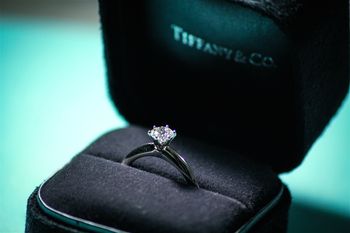People in Mumbai woke up to an unusual advertisement earlier this week. It was a campaign from De Beers diamonds, urging men to buy diamonds for their daughters once they turned 16. “Others see you throwing a teenage tantrum; I see you standing your ground. They see you as stubborn; I see you as setting boundaries for yourself,” says the father. The advertisement had a caption that was an instant giveaway, “Love so natural only a natural diamond would do.”
A few weeks ago, Tata’s Zoya jewels started the fire. A video campaign for their new collection ‘Reborn’, directed by the Cannes Lion-winning Laurence Dunmore, showed a grown woman prancing on a beach, her dress billowing in the sea breeze. A voice said: “Some of us are born twice. The first time for the world. The second time for ourselves.” The campaign urged women to buy a solitaire for themselves, instead of waiting for a man to buy it for them. It essayed empowering ideas of resurgence and reinvention, which women often face once they reach 40 or 50. They often find themselves alone, but also richer. Either their children have left for universities, or their men have left. The women are in a space of rediscovery, and a diamond, a real diamond of course, must be purchased to celebrate this new life instead of curling up in self pity.
When did a diamond go from being a symbol of romantic love to being a sign of flying solo?
Wedding rings, always a western idea, began in ancient Rome and Greece and spread to the rest of the world with the spread of Christianity. They were historically a gold band, or any precious metal, and sometimes encrusted with precious stones.
In 1886, Tiffany founder Charles Lewis Tiffany introduced a ring with a Tiffany setting, which had a large diamond held up with six prongs. They marketed it as an engagement ring, or a promise of a marriage ring. The design was so simple and revolutionary, and priced so high, it became a must-have. Now, engagement rings and wedding rings are a worldwide cross-cultural tradition, signalling possibly the most successful marketing blitz known to global commerce.
Then women began to work, and all hell broke loose for patriarchy. Divorce rates kept soaring. Many women preferred staying single to getting married. Falling in love, and its ensuing trauma, turned into self love. A young filmmaker of Hindi movies tells me the hardest thing to do today is write a love story. Designer Sabyasachi Mukherjee has publicly decried the lehenga to be dead, and the Indian wedding industry to be on the wane.
Wedding rings and engagement rings, symbols of love and infinity, became a stamp of ownership. Women didn’t want to be owned, they were finally free.
But another thing happened. Diamonds grown in laboratories were invented, and they were as good as the real thing. The lab grown diamond market size was $22.79 billion in 2023, and is estimated to be at $74.45 billion in 2032.
The real diamond business is now on a steep decline. The ICRA, a renowned credit rating agency, expects India’s cut and polished diamond trade to plummet to $12.5-13 billion, based on a contraction of 18-19 per cent in 2025.
Expectedly, women are supposed to save the day. Like many advertisers have realised, women, more financially independent than ever before, are now the target audience. Economic empowerment, changing gender roles and growing ideas of social justice have changed the consumer landscape. Women have emerged as a growing and key demographic.
Can the diamond, a symbol of eternity, be saved? Only the ladies hold the key.
X@namratazakaria


